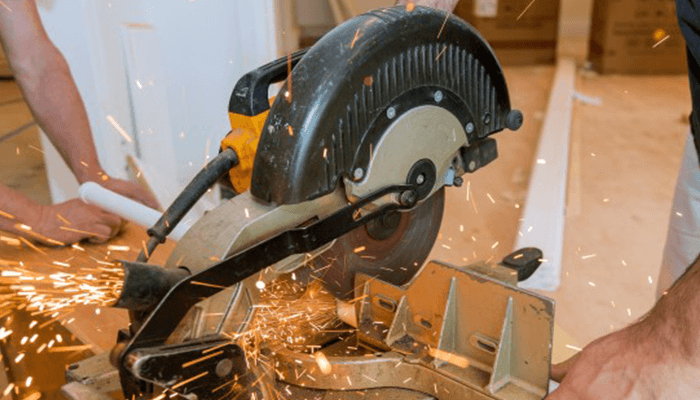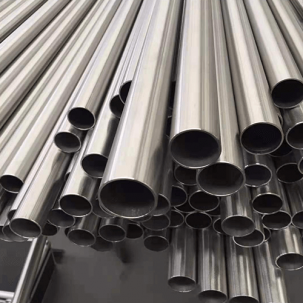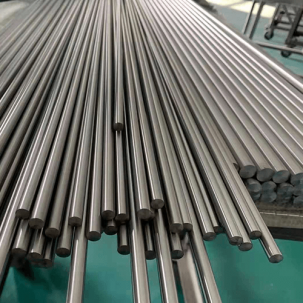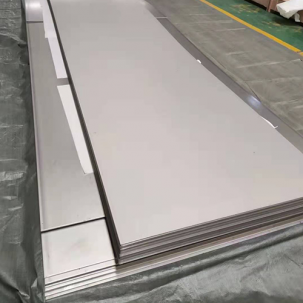If you want to know how to cut metal yourself, you’re in the right place.
In this article, we’ve included all the best DIY tricks and included a list of necessary tools to help you cut metal.
As metal can be sharp around the edges and is hard in nature, you need to remain aware and cautious during this process. So, always wear protective goggles—especially when using an apparatus to assist you. If metal fragments enter the eye, you could be blind.
Ready to go? Let’s get started.
How to cut metal without power tools at home
Here are some effective and safe ways on how to cut metal at home without tools.
– Cutting metal with a blade
There’s no one set blade for every metal. Instead, consider a carbide-tipped abrasive cutoff wheel for brass, aluminum, cropper, or lead.
This type of blade lasts up to 10 times longer than steel ones. It can also power through with ease. Bimetal blades also last a long time, but they tend to be more expensive.

Furthermore, you should choose a blade with 20 to 24 TPI for thin metal. For medium to thick metal, opt for 10 to 18 TPI. Finally, for the thickest metals, choose around 8 TPI.
– Ways to cut a pipe
To know how to cut metal pipe, you can use various tools: a tube cutting tool, angle grinder, hacksaw, and more. A tube cutting tool offers precise cuts, which is essential for cutting new pipes. Yet, this tool is only designed to cut pipes, so you might not make use of it again.
An angle grinder is ideal for removing an old pipe from a confined space. Ensure you wear protective eyewear, gloves, and earplugs. You should also be cautious that you have the right wheel for the metal. Blades with smaller tines work well with hard metal.
Finally, you’re more likely to have access to a hacksaw than the above options. Make sure you secure the pipe before you begin cutting. The process takes longer, but you’re in more control. Use gentle pressure to cut the pipe rather than forcing anything.
– Cutting sheet metal
Sheet metal presents itself in different strengths and thicknesses. For this operation, you can use an electric saw for cutting simple lines. Or, opt for tin snips metal nibblers for curved lines that need more stability.
When using an electric saw, wax the saw blade before you begin. Then, tape the sheet metal securely to a table. This will help to make a cleaner cut with fewer scratches on the metal. Next, press the saw against the sheet metal. Position the saw blade against the metal’s edges. The teeth will point forward. Grip the saw with both hands and push the blade forward with your strongest hand. Use slow motions.
– Using a grinding disc
If you want to know how to cut metal at home, a grinding disc can help. Be aware that discs rotate very quickly. This can result in chips of metal flying off at high speeds. So, wear eye protection and protective footwear and gloves. A grinding disc can cut through ferrous and non-ferrous metals.
Make sure the metal is firmly clamped to a solid surface. Ideally, use a vice. Most importantly, the grinding disc needs to be held at the correct angle that you want to cut. Otherwise, you could end up with an uneven surface with chunks of sharp metal. For cutting metal, place a thick piece of cardboard under the tile. This will prevent vibrations that could cause it to crack. Very lightly clamp the tile to the work surface. Too tight and it’ll crack and go flying.
– Using tin snips to cut through metal
To cut curved lines, choose the right tin snip for the direction you’ll be cutting. Align the snips against the metal. Once they’ve made contact with the metal, cut like traditional scissors. As you continue to cut, ensure the tin snips are level against the metal.
There are also different types of tin ships depending on the thickness of the metal. For example, straight-cutting compound snips work best for thick metal.
– Cutting metal with a hacksaw
If you want to know how to cut metal with a hacksaw, you’re in the right place. This non-intimidating tool is great for beginners. Firstly, consider the TPI based on the metal thickness.
- 14 TPI: Aluminum
- 18 TPI: General workshop materials
- 24 TPI: Steel up to 5/6mm thick
- 32 TPI: Hollow materials or steel tubing

Once you have the correct size, check the blade is rigid and correctly aligned. Clamp the workpiece in a vice. Or use another method to hold the metal securely to the surface.
For how to cut metal by hand, use one-way strokes against the teeth’s direction. Once you’ve gained a millimeter dent in the metal, you can use full forward and backward motions. Don’t rush. Use steady, smooth motions.
– Chopping metal with a utility knife
This process is great for beginners. You may need to measure and mark where you want the cuts to be. Make sure you’re wearing goggles to protect your eyes against any shard of metal flying off.
Hold the ruler-straight along the mark-up line and score using the utility knife. Use moderate pressure and make light score marks at a time to prevent any damage. Bend the metal back and forth along the scored line until it snaps at the point you want.
– Metal-cutting with a bench shear
Bench shears are mounted to the workbench to create a secure workspace. A bench shear can be used to cut out rough shapes and straight lines in the metal.
Make sure you wear PPE for your own safety. Measure and mark the line you need, or use a score. Then, place the metal between the blades. Pull the lever downwards to spark the blades and push it back to an upright position. This will open the blades.
– Using a chisel to cut metal
Make sure your chisel is 25 percent wider than the metal you’re cutting. Begin by sharpening the chisel to a 60 or 70-degree bevel. Then, apply some oil to the cutting edges before you begin cutting. This will increase the tool’s efficiency and reduce any friction.
Place the metal in the middle of the jaws and make sure the vise is tightened. Align the chisel with the vise’s screw to maximize each strike’s power.
Cutting metal using power tools
For a helping hand, power tools can be an effective way to cut metal. Yet, we recommend that you have experience using one and should always wear protective equipment for your own safety.
– Angle grinder
An angle grinder is a powerful and effective tool for cutting metal. Angle grinders are most commonly available in sizes 4 ½”, 5”, 6”, and 9”. Never use a cutting disk for an angle grinder, as they’re not designed to withstand the pressure.

Once your tools and metal are in place, prepare the angle grinder. Do this by attaching the correct cutoff disc and placing the spindle nut in the correct place. Then, hold the grinder with both hands and start cutting the metal. Follow the line that you’ve already marked on the metal. If you need to change direction, do so carefully and gradually. This will protect you from injuries.
– Chop saw
Or, use a chop saw to cut metal. Before you power on the saw, check that the guard is in good condition. Set it at the correct position, and ensure that all cables are clear from the cutting area.

Place the metal on the table and secure it in place. Once you’ve done this, apply pressure on the workpiece against the fence. Then, depress the power switch on the saw. Wait and listen for the blade to reach its full speed before you lower the blade onto the metal.
– Miter saw
A miter saw is another great tool for cutting metal. Although they’re traditionally used for cutting wood, they can be used on thin metals, too. First, if you’re using a saw with an open motor housing, tape some thin cloth over the openings. This will help to protect the motor from metal chips.
The reason a miter saw isn’t appropriate for cutting large amounts of thick metal is that the tool’s speed runs at around ⅔ times faster than a metal saw. This high speed can result in high levels of friction and making the workpiece hot to touch.
For cutting aluminum, the miter saw should have a high number of teeth with a triple-chip grind. This will help you achieve a clean, smooth finish. Blades made of aluminum oxide are best suited for the task, too.
– Oscillating saw
An oscillating saw is a great tool to cut metal. Always start with the tool at a low speed. Once you’re comfortable with cutting, you can increase the speed. You should always let the blade do most of the work, without you forcing. If you apply too much pressure, the blade can wear out. Furthermore, a sharp metal cutting blade will get the job done quicker and won’t require you to apply as much force.
– Reciprocating saw
To use a reciprocating saw, check the correct blade for the metal you’re cutting. Choose a longer blade when flush cutting. Using small blades on thin materials will help to eliminate any movement during use. Typically, the blade should only be a couple of inches longer than the depth of the cut required.
Insert the blade into the saw. Saw the saw to a slower speed for more control. This will extend the blade’s life. Plus, it’ll provide more control and precision.
– A Bandsaw (horizontal or vertical)
Bandsaws are versatile tools that are available as cordless, freestanding floor, and bench-top models. It’s important that you don’t use this tool for thin materials. As a rule of thumb, the metal should be thicker than the depth of three bandsaw blade teeth.
Begin by marking or scoring the cut line. Make sure the blade is appropriate for the metal you’re cutting and it’s correctly fitted to the bandsaw. Then, check that the blade guards are in the correct position. Adjust all settings for the type of cut you’ll be performing—including the speed and mitre angle.
When you use a bandsaw in the vertical position, rest the metal on the plate and push it toward the blade. All the while, maintain some pressure. When using the vertical operation, you can push the material through the blade. But, when in horizontal mode, the blade is pushed through the workpiece.
– Oxy-acetylene torch/cutting torch
This process is used for cutting mild steel. When lighting the light, separately purge both oxygen and fuel gas lines. Open the fuel gas by half a turn. Ignite the flame with a striker and increase the fuel gas flow. Do so until the flame leaves the end of the tip and there’s no longer any smoke.
– Plasma cutter
A plasma cutter will cut a variety of metals, including the conductive types. Begin by connecting your cutter to an air compressor. Then, connect it to a 240V or 415V supply. Connect the earth lead to your workpiece, and connect the plasma cutter torch to the cutting machine.
You’ll then need to select your cutting amperage. Finish by pressing the switch on your torch handle and move the torch across the work as the arc continues to cut the metal.
– Electric metal shears
You can cut various metals using electric metal shears. This electric tool can cut through metal using a sharpened blade. It slices cleanly through sheet metal without creating any wasted material. In fact, electric metal shears can leave a smoother, more dust-free finish than other tools.
Single-cut metal shears come equipped with sharpened blades on the top and bottom of the jaw. The opening and closing action of the jaws results in a clean slice with every action. Or, double-cut shears use two curtains on the bottom face. Due to the tool’s geometry, this type of electric shear is much harder to work on curved surfaces. But, it won’t warp the material.
Choosing the right blade for the right metal
For the best cut, you need the right size blade. This can also prevent any injuries, as well as leaving a smoother, more professional finish.
Circular saw blades are used with miter saws, table saws, cut-off saws, standard circular saws, and radial arm saws. Carbide tipped band saw blades are used for metal, wood, and composites. The steel and carbide grades create a faster and longer cut.
Bi-metal band saw blades are the most versatile type of blades. They’re suitable for a range of materials, including metal, aluminum, carbon, and structural steel. They feature a long blade life with high-speed tooth tips. Plus, the flexible alloy steel back makes them suitable for cutting curves.
Finally, reciprocating saw blades can do almost any job. They’re versatile and you can remove the different blades depending on the material. Thus, it’s ideal for repairs and using for a variety of tasks and materials.
Tips for cutting metal safely
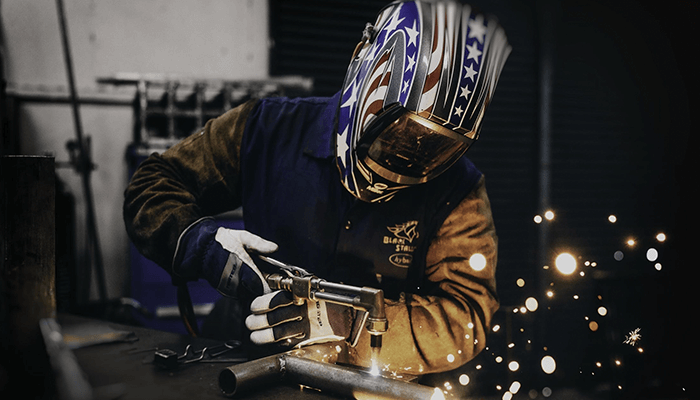
Using metal cutting tools can be effective, but is a dangerous task. Below are some important safety considerations:
- Always wear protective eyewear
- Wear heavy-duty footwear
- Wear thick, working gloves
- Securely attach the metal to a surface. Ideally, use a vice for this
- Remain concentrated on the task and eliminate distractions
- Never run your fingers along the rough edge
- Always use the correct tool and blade for the task
FAQs on cutting metal
The hacksaw is the most common hand saw used to cut metal. It features a thin, slightly flexible blade that runs across the open part of the hacksaw’s frame.
This type of saw can be used for a variety of metals of different thicknesses. Furthermore, a hacksaw is great for beginners as it’s less intimidating to use.
There are many saws on the market that can cut metals. The DEWALT Metal Cutting Saw is ideal for construction projects.
It features a 14-inch carbide blade with 66 teeth. It’s a cost-effective tool. It also has a 15 amp 4 HP motor.
Whether you need to know how to cut metal by hand or with tools, you might be looking for a straight finish.
First, always securely clamp your metal to a workstation. This will keep it stable while you cut and prevent any wobbles. These scenarios could lead to uneven edges.
For further guidance, sliding contractors and roofers score the metal material and can help you to create straight, precise cuts. We also suggest that you remain patient during the cutting process. Use small, light motions until you’ve made a groove in the metal material.
Final thoughts
We hope you enjoyed this article on how to cut metal.
There are various methods involved in this process and we hope to have covered many that are suitable for you.
For your safety, it’s important that you use the correct tool and method for the job. If you’re using an inappropriate tool or using it incorrectly, you risk shards of metal flying out. Not to mention that the metal can heavily vibrate, which can cause uneven cuts.
We’d love to hear your overall feedback in the comments.
Don’t forget to share this article with your friends and family, too.

